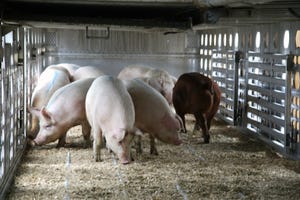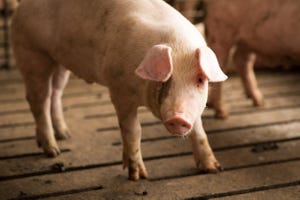AASV fills the gaps for up-and-coming swine veterinarians
Murray encouraged the veterinary community to engage with these students as they are often armed with new ideas and the ability to see things on the farm, without any preconceived ideas or historic baggage.

Several years ago, Deborah Murray had the privilege to judge the student poster competition at the American Association of Swine Veterinarians annual meeting. During that event, the Veterinary Services manager for New Fashion Pork met a young man who explained that his research project involved trying to get a farm to change their biosecurity practices in the farrowing house. He had swabbed all the fomites and equipment where he thought there was potential for porcine reproductive and respiratory syndrome virus spread, only to get negative results.
Then he noticed employees tossing tails and testicles on the floor and thought maybe he should test those for PRRSV, and low and behold some of those tested positive. That student’s curiosity instigated a system change. It’s now common practice to collect those parts while piglets are being processed and many farms and producers have gone one step further, collecting processing fluids for multiple pathogens.
“What do we have in the end, we have the processing fluids that we do testing on, but where did that really all begin?” Murray says. “That began from an idea from a student, so our students have been great assets for us.”
During her presentation “Today’s swine veterinarian: Challenges and opportunities for the future” at the AASV 50th anniversary event, Murray encouraged the veterinary community to engage with these students as they are often armed with new ideas and the ability to see things on the farm, without any preconceived ideas or historic baggage. After all, their thoughts and comments could be invaluable at improving or even recreating procedures.
How does the industry retain this young talent?
AASV recently conducted a survey with 158 members who graduated from veterinary school from 2005 to present to evaluate how the organization is doing at mentoring these students and to see what could be done better. Some key findings in the survey include:
39% of respondents strongly agreed that the AASV has helped prepare them for practice, an additional 45% agreed.
90% of respondents say that they had a mentor who helped them their first few years in practice.
When asked who mentored them their first years in practice, the list was quite extensive with well over 100 members having served as mentors to these respondents, and several individuals were considered a primary mentor to many new graduates.
Did these mentors need to practice for 20-plus years to have this influence on new graduates? No, they did not. Many mentors listed had only been out of school for 10 years or less themselves.
87% of respondents agreed that they too were able to apply in their practice what a student worked on and presented at AASV as either a poster or an oral presentation.
66% of respondents say that their practice or company changed or modified a protocol or procedure because of work done on a summer internship or project that their company or practice hosted.
Murray says this demonstrates the quality of the student projects that are accomplished by up-and-coming AASV members.
What were some of the things that were changed? The responses ranged from production-related adjustments such as gilt breeding timing and sow feeding to troubleshooting positive pressure filtration and developing a new employee training program.
Changes not only happened at industry level due to these student projects. Many times, the AASV experience influenced the recent graduates’ career choice. Some students said they would have chosen small animal practice, or may have practiced mixed species, and not exclusively swine, if it wasn’t for AASV. Over 50% of respondents agreed that the organization had influenced their career choice.
“We all know there are veterinary schools that don’t have a strong swine focus so the fact today that we are filling the gaps for those students, it really speaks to the volume of our organization and our annual meeting,” Murray says.
Are there opportunities for AASV to improve upon? Murray says absolutely.
“Never underestimate the value that mentorship brings to these young graduates and if you are not already a mentor this is certainly a call to become one,” Murray says.
After all, this up-and-coming talent may be the key to incorporating new technologies such as pen-side diagnostics and telemedicine apps or digital records and standardization of medical records and artificial intelligence to identify issues in a barn with real-time data reporting.
“Some of these things I feel are in the works, but maybe they just need to be improved upon,” Murray says.
Murray says she couldn’t agree more with one student’s response on the future challenge of a swine veterinarian, “We need to focus on basics because animal welfare will become more important going forward and how the public views our industry.”
About the Author(s)
You May Also Like





